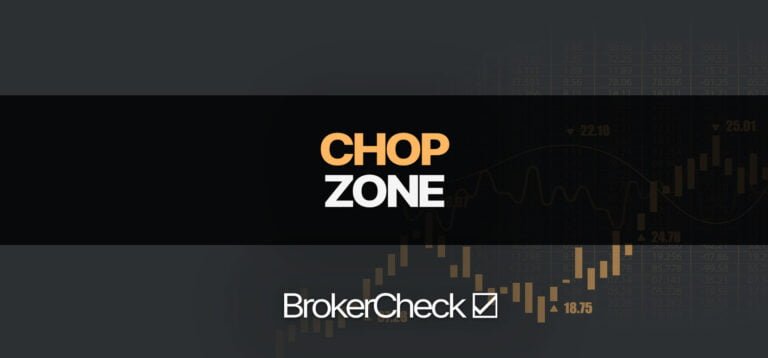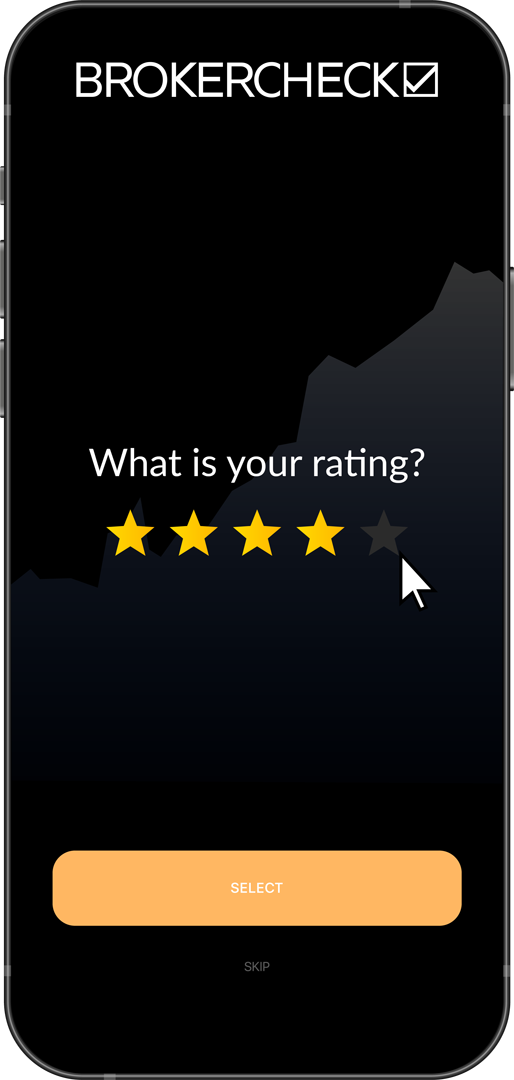1. Understanding the Choppiness Index
The Choppiness Index is a volatility indicator developed by Australian commodity trader E.W. Dreiss, which determines whether the market is choppy (consolidating) or trending. It’s a tool that doesn’t predict future direction, but rather measures the degree of market noise. The index ranges between 0 and 100, with higher values indicating a more choppy, range-bound market, and lower values suggesting a strong, directional trend.
The Choppiness Index is generally used with a default period of 14 bars, although this can be adjusted to suit different trading styles and timeframes. A common technique is to use the levels of 61.8 and 38.2, which are derived from the Fibonacci sequence. When the index crosses above 61.8, it suggests that the market is consolidating, and traders might want to avoid trend-following strategies. Conversely, when the index drops below 38.2, it suggests a strong trend is in place, and trend-following strategies could be profitable.
However, the Choppiness Index is not a standalone tool. It’s best used in conjunction with other indicators and analysis techniques to confirm signals and avoid false alarms. For instance, combining it with a trend indicator like the Moving Average Convergence Divergence (MACD) can help confirm the presence of a strong trend when the Choppiness Index is low. Similarly, using a volume indicator can provide additional confirmation when the index suggests the market is in a consolidation phase.
In essence, the Choppiness Index is a versatile tool that can help traders navigate both trending and choppy markets. However, like all technical indicators, it’s not foolproof and should be used as part of a comprehensive trading strategy that includes risk management and a clear understanding of market fundamentals.
1.1. Definition of Choppiness Index
The Choppiness Index is a volatility indicator developed by Australian commodity trader E.W. Dreiss, which is designed to determine whether the market is trading in a trending or choppy (non-trending) period. It does not predict the direction of the trend, but rather the strength of the trend. The Choppiness Index is a scale from 0 to 100. Readings below 38.2 indicate that the market is trending, while readings above 61.8 suggest that the market is choppy or, in other words, lacking a distinct trend.
The Choppiness Index is calculated using the logarithm of the sum of the exponential moving averages (EMAs) of the true range for a certain period, divided by the logarithm of the highest high minus the lowest low for that period. The result is then multiplied by 100 to provide a readable number. The default period used for the calculation is 14, but this can be adjusted based on the trader’s preference and the asset being traded.
The Choppiness Index is often used in conjunction with other technical analysis tools to confirm the strength of a trend and to help traders avoid getting caught in choppy markets. For example, if a trader is using a trend-following strategy, they might look for a low Choppiness Index reading as confirmation that the market is trending and it’s a good time to enter a trade. Conversely, a high reading might suggest that it’s a good time to stand aside or consider a range-trading strategy.
Understanding the Choppiness Index and how to use it effectively can be a powerful tool for traders. By helping to identify periods of trend and choppiness, it can assist in making more informed trading decisions and potentially increase profitability. However, like all technical analysis tools, it’s important to use the Choppiness Index in conjunction with other indicators and not as a standalone decision-making tool.
1.2. The Theory Behind the Choppiness Index
The Choppiness Index, an indicator developed by Australian commodity trader E.W. Dreiss, is a powerful tool that allows traders to identify and capitalize on market trends. At its core, the Choppiness Index is based on the fractal nature of markets. This theory, also known as the Chaos Theory, posits that markets are non-linear, dynamic systems that can be analyzed and understood through fractal mathematics.
The Choppiness Index leverages this theory by measuring the ‘choppiness’ or ‘directionless’ nature of a market. When the market is trending, the Choppiness Index value is low; when the market is not trending (or ‘choppy’), the value is high. This is a reflection of the fractal nature of markets – trends and patterns emerge and dissipate, but they do so in a non-linear and unpredictable manner.
The Choppiness Index is not a directional indicator – it doesn’t tell you which way the market is moving, but rather how much it’s moving. It’s a tool that measures market volatility, and it does so by comparing the current market range (highest high – lowest low) with the total range of a certain period. The result is a value between 0 and 100 – a low value indicates a strong trend, while a high value indicates a ‘choppy’, directionless market.
Understanding the theory behind the Choppiness Index is crucial for its successful application. It’s not just about reading numbers and making trades – it’s about understanding the fundamental principles that drive market behavior, and using that knowledge to make informed, strategic decisions. The Choppiness Index is a tool that allows traders to do just that – it’s a window into the fractal nature of markets, and a guide to navigating their unpredictable waters.
1.3. How the Choppiness Index is Calculated
The Choppiness Index is a volatility indicator developed by Australian commodity trader E.W. Dreiss. The calculation for this technical analysis tool might seem complex, but it’s based on a straightforward concept: it measures the degree of market volatility or, more specifically, the trendiness of the market.
The Choppiness Index is calculated using the logarithm of the sum of exponential moving averages (EMAs) of the true range for a certain period, divided by the logarithm of the highest value minus the lowest value for that same period, all multiplied by 100.
Let’s break it down:
1. First, calculate the True Range (TR) which is the greatest of the following: current high less the current low, the absolute value of the current high less the previous close, or the absolute value of the current low less the previous close.
2. Then, calculate the Exponential Moving Average (EMA) of the True Range for a chosen period.
3. Sum up all the EMAs of the True Range.
4. Calculate the logarithm of the sum of EMAs of the True Range.
5. Determine the highest and lowest price for the chosen period.
6. Calculate the logarithm of the highest price minus the lowest price.
7. Finally, divide the logarithm of the sum of EMAs of the True Range by the logarithm of the highest price minus the lowest price, and multiply the result by 100.
This calculation results in a value between 0 and 100. A Choppiness Index value closer to 100 indicates a non-trending or choppy market, while a value closer to 0 suggests a strong trend. Understanding how this index is calculated can significantly enhance your trading strategy, as it provides insight into market volatility and potential trend reversals.
2. How to Use the Choppiness Index Successfully
The Choppiness Index, a volatility indicator developed by Australian commodity trader Bill Dreiss, can be an invaluable tool for traders when used correctly. This index measures the degree of market noise or choppiness in price action, versus the trending or directional movement. A high reading indicates a choppy market with lots of price noise, while a low reading suggests a strong directional trend.
To use the Choppiness Index effectively, it’s crucial to understand its scale. The index ranges from 0 to 100, with values above 61.8 indicating a choppy, range-bound market and values below 38.2 suggesting a trending market. Traders can use these levels to identify potential breakouts or to signal the end of a trend.
One popular strategy is to use the Choppiness Index in conjunction with other trading indicators. For instance, if the Choppiness Index is below 38.2, indicating a strong trend, and a moving average crossover occurs, this could be a strong buy or sell signal. Conversely, if the Choppiness Index is above 61.8, indicating a choppy market, traders might choose to avoid entering new positions until a clearer trend emerges.
Patience and discipline are key when using the Choppiness Index. It’s important to remember that while this tool can help identify potential trading opportunities, it doesn’t predict future price movements. As with any trading strategy, it’s essential to manage your risk and not to rely solely on one indicator. The Choppiness Index can be a powerful tool in your trading arsenal, but only if used wisely and in conjunction with a comprehensive trading plan.
2.1. Interpreting the Choppiness Index Values
Diving deep into the heart of the Choppiness Index, it’s crucial to understand how to interpret its values to make successful trading decisions. The Choppiness Index oscillates between 0 and 100, with specific values indicating certain market conditions. When the index is below 38.2, it suggests that the market is trending. This is a key point for traders who rely on trend-following strategies, as it signals a strong directional movement in the market that could be profitable to follow.
Conversely, when the Choppiness Index value rises above 61.8, it indicates that the market is ‘choppy’ or range-bound. This is an essential cue for range traders, who can take advantage of the lack of a clear trend to buy at low prices and sell at high prices within the range. However, it’s important to note that the Choppiness Index does not indicate the direction of the trend or the range, but merely the nature of the market movement.
Understanding these values is the first step towards using the Choppiness Index effectively. It’s not just about knowing the numbers, but about interpreting what they mean in the context of your trading strategy. The Choppiness Index is a versatile tool that can complement various trading styles, from trend-following to range trading, and can provide valuable insights into market conditions that other indicators might miss.
2.2. Choppiness Index as a Complementary Indicator
Choppiness Index is a powerful tool that can significantly enhance your trading strategy when used in conjunction with other indicators. It is designed to determine whether the market is choppy (consolidating) or trending, making it an excellent complementary indicator to your primary trading signals.
The index operates on a scale from 0 to 100, where a value above 61.8 indicates a choppy, range-bound market and a value below 38.2 suggests a trending market. Traders often use this information to optimize their entry and exit points, adjusting their strategy according to the market’s behavior.
Pairing the Choppiness Index with directional indicators such as the Moving Average Convergence Divergence (MACD) or the Relative Strength Index (RSI) can provide a more comprehensive view of the market’s direction. For instance, in a choppy market, these indicators may provide false signals, leading to potential losses. By using the Choppiness Index, traders can filter out these false signals, focusing only on those that align with a trending market.
It’s important to note that the Choppiness Index is not a standalone tool. It doesn’t provide buy or sell signals on its own. Instead, it offers valuable insight into the market’s condition, helping traders to make more informed decisions.
While the Choppiness Index is undoubtedly a useful addition to any trader’s toolbox, it should always be used in conjunction with other tools and indicators. By doing so, you can ensure that you’re making the most informed trading decisions possible, minimizing risk and maximizing potential returns.
2.3. Trading Strategies with the Choppiness Index
The Choppiness Index is a volatility indicator developed by Australian commodity trader E.W. Dreiss, which determines whether the market is choppy (consolidating) or trending. The index ranges between 0 and 100 with higher values indicating a more choppy or range-bound market, and lower values suggesting a strong trend.
The magic lies in understanding how to interpret these values to create effective trading strategies. Typically, a reading above 61.8 signals that the market is choppy, presenting a potential opportunity for range trading strategies. On the other hand, a value below 38.2 suggests a strong trend, making it an ideal scenario for trend-following methods.
Using the Choppiness Index as a standalone tool can be risky, as it does not provide signals for entry or exit points, nor does it indicate the direction of the trend. Hence, it’s best used in conjunction with other technical analysis tools. For example, when combined with a moving average, the Choppiness Index can help confirm the strength of the trend. If the moving average shows an upward trend and the Choppiness Index is below 38.2, it could indicate a strong upward trend. Conversely, a high Choppiness Index reading could suggest that the current trend is weakening, and a reversal may be imminent.
Successful trading with the Choppiness Index also involves understanding its limitations and potential false signals. For instance, a low reading doesn’t always guarantee a strong trend, and similarly, a high reading doesn’t necessarily mean the market is range-bound. It’s crucial to consider other market factors and indicators to validate the signals from the Choppiness Index.
In essence, the Choppiness Index is a valuable tool for identifying market conditions and helping traders decide on the most suitable strategy – whether it’s to follow the trend or to trade within the range. However, like any trading tool, it’s not infallible and should be used as part of a comprehensive trading strategy that considers multiple indicators and market conditions.
2.4. Avoiding Common Mistakes When Using the Choppiness Index
Navigating the financial markets can often feel like sailing through stormy seas, and as a trader, you need every tool at your disposal to chart a successful course. The Choppiness Index is one such tool that can help you identify periods of consolidation and predict potential breakouts. However, like any tool, it’s not infallible and misusing it can lead to costly mistakes.
One common mistake is relying solely on the Choppiness Index to make trading decisions. While the index can provide valuable insights into market conditions, it should not be used in isolation. Always corroborate the readings from the Choppiness Index with other technical indicators or price action signals before making a trade.
Another pitfall to avoid is misunderstanding the index’s values. A high value (above 61.8) suggests a non-trending, or “choppy” market, while a low value (below 38.2) indicates a trending market. Do not mistake a high value for a bullish signal or a low value for a bearish signal. The Choppiness Index does not provide directional information; it merely indicates whether the market is trending or choppy.
Over-reliance on the default settings is another common mistake. The default lookback period for the Choppiness Index is 14 periods, but this may not be suitable for all trading styles or market conditions. Experiment with different settings to find the one that works best for your trading strategy and the current market environment.
Lastly, overlooking the limitations of the Choppiness Index can lead to poor trading decisions. Remember, the index is a lagging indicator; it reveals what has happened in the past, not what will happen in the future. Moreover, it’s less effective in markets with a strong trend. Always consider the broader market context when interpreting the Choppiness Index.
In the high-stakes world of trading, avoiding these common mistakes when using the Choppiness Index can mean the difference between a successful trade and a costly misstep. Be sure to use this tool wisely and in conjunction with other indicators to maximize your trading potential.










